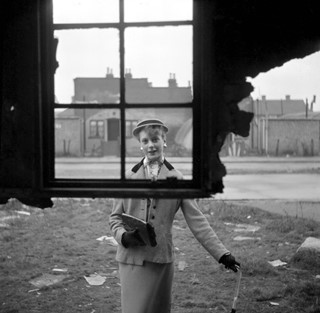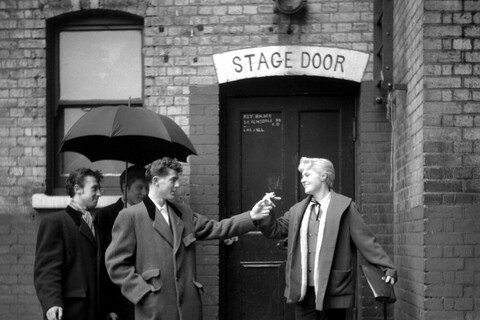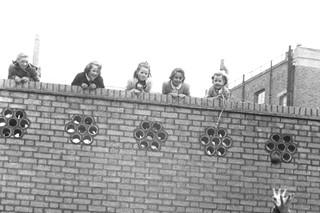An exhibition of the filmmaker’s photographs transports viewers to post-war London, offering a glimpse into a bygone era and a look inside the mind of one of art’s most experimental auteurs
It is with his outlandish if controversial films such as The Devils (1971) and Women in Love (1969) that the legendary British filmmaker Ken Russell made his name. But the so-called wild man of British cinema, who died in 2011, also took photographs, creating a memorable body of work that offers a candid glimpse into London life in the 1950s. With an eye for spotting the quirky and the absurd, Russell, who was then in his twenties, wandered the streets of the capital city with his camera, recording post-war life as he saw it. The result is a series of charming if sometimes strange and surreal images, a selection of which are on show at Proud Chelsea in London.
Often witty and tongue-in-cheek, the images combine street photography with storytelling. In one, a policeman on a pogo stick chases after a criminal. The policeman is in fact Russell, his wife Lisi Russell reveals. “Ken and his friends would dress up and lark around… He would see something that would spark a premise [for a photograph].”
Russell also took images of teddy girls with their distinctive haircuts, neckties and boyish tailored jackets. These images, and many others of everyday folk, offer a unique insight into post-war trends in fashion, culture and lifestyles. Most interestingly, each one is its own ‘mini-drama’ with a carefully spun narrative, revealing Russell’s cinematic eye. “I tuned into anything that seemed weird,” Russell has said. “The novelty value appealed to me.”
After a short career as a ballet dancer, Russell turned to photography, studying at Walthamstow College in East London. He wanted to be a fashion photographer, but found success as a freelance photographer within advertising, and contributed to magazines including Illustrated and Picture Post. He went on to make documentaries for the BBC and achieve critical success for his full-length films. Although Russell’s photography career was short-lived, he admitted his photographic background informed his work in film. “Finding ways to make the image work visually is what I was brought up to do,” he has said. “You learn how to take photographs and it’s not that different to being a cinematographer. Composition is composition.”
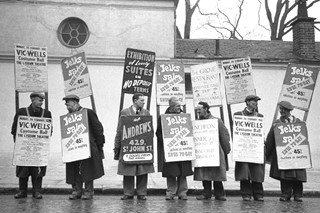
Russell’s photographer’s eye is evident in his films, says Lisi Russell, commenting that each one is made up of still photographs, which are “extremely composed, tucked away inside movies that look as though they have been made at breakneck speed. Every few frames [there is] a still image that takes your breath away… they are there if you stop and look.”
The original signed prints on show at Proud Chelsea transport the viewer to a time when London and Great Britain as a whole were recovering after the Second World War. These “still films” as Russell called them are unique historical visual records of a bygone era. “You time travel when you look at Ken’s photographs,” says Lisi Russell. But they are also a reminder of the zany, unconventional talents of this most rebellious and eccentric of visionaries. “Ken was always in motion… He captured moments and you feel as though you know how the people [in those images] felt. Ken was constantly creative, a genius.”
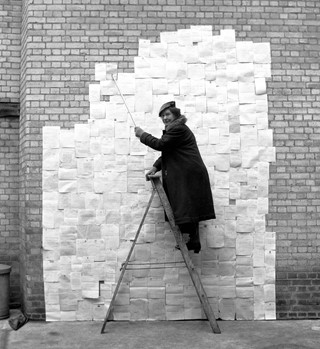
Reality is a Dirty Word: Photographs by Ken Russell is on show at Proud Chelsea until January 3, 2017.
